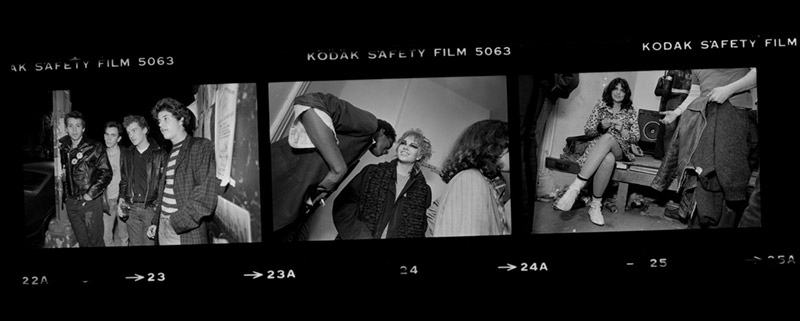
THE NEW YORK TIMES
In 1979, the photographer Lucian Perkins stumbled into a seminal moment in music history. He didn't know it at the time, of course. He was 26, a photography intern at The Washington Post, when by chance he heard an emerging punk band, Bad Brains, playing above a Washington restaurant¦ READ THE FULL STORY
MOTHER JONES
Photographer Lucian Perkins earned two Pulitzer prizes during his 27 years working for the Washington Post, shooting nearly every major historical event of the past two decades. (More recently he cofounded Facing Change, a group that documents rural America in the spirit of the Farm Security Administration.) In his archives, among shots of the Berlin wall coming down, war in the former Yugoslavia, and Palestinian uprisings in the West Bank, Perkins' assistant Lely Constantinople discovered that her boss also happened to have some amazing, rarely seen photos of the early DC punk scene, shot early in Perkins' Post career¦ READ THE FULL REVIEW
THE WASHINGTON POST
A great concert photograph finds a way to communicate all the stuff your retinas can't detect. Noise. Humidity. Claustrophobia. Young minds being shaped inside sweaty skulls… READ THE FULL STORY
THE PHILADELPHIA REVIEW OF BOOKS
When I worked at the Museum of the International Center of Photography my favorite shows were always those that included salvaged photographs. One such show featured 35mm negatives that a group of photographers shot during the Spanish Civil War. The loyalist-friendly photographers fled quickly when the fascists took Barcelona, and entrusted their negatives to a friend at the Mexican embassy, who was able to get the negatives out of the country thanks to his diplomatic immunity. An anonymous filmmaker found the negatives sixty years later, in a cardboard box in his grandmother's Mexico City attic.
PUBLISHER'S WEEKLY
Pulitzer Prize winning photojournalist Perkins's images, taken during the fall and winter of 1979 and published to accompany a traveling exhibition, document a formative period in Washington, D.C.'s then-nascent punk and hardcore rock scene. At a time when local bands were struggling to find venues at which to perform, hardcore groups began playing at a daring set of unheralded, unproduced, DIY pop-ups. Perkins was one of the few to bring a camera to these shows, and he produced propulsive images of the aesthetic as it was forming¦ READ THE FULL REVIEW
WASHINGTON CITY PAPER
Other aesthetic movements undergo cycles of nostalgia, from neoclassicism to steampunk. We're at a high point for D.C. hardcore nostalgia, what with the Corcoran's recently concluded "Pump Me Up" show, various band reunions (Scream, Dag Nasty, and Black Market Baby to name just a few), the Fugazi Live Series, and a string of documentaries on the 80s D.C. music scene. But one could be forgiven for thinking that it's always been this way: that D.C. punks, like Baby Boomers, just never stop talking about themselves¦ READ THE FULL REVIEW
THE HUFFINGTON POST
What do punk rock, a Washington Post reporter and books have in common?¦ READ THE FULL REVIEW
